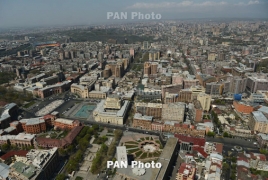
The peaceful transition of power in Armenia has already begun to transform the nation’s capital, Yerevan, as residents have started new businesses, former residents are returning and travellers have begun visiting in higher numbers, BBC says in a news article.
Though a small country of just three million people, Armenia made global waves last spring with its Velvet Revolution – a months-long peaceful protest movement that eventually resulted in the resignation of the long-standing prime minister Serzh Sargsyan and election of Nikol Pashinyan, a former journalist who led the protests with his passionate speeches and civil disobedience campaign.
People here tend to be extremely social and tight-knit, while still always being welcoming to new faces. Many see the culture as inclusive – here, another person joining a group or community is perceived as a positive – and the Armenian nimbleness with various languages can help amplify this feeling of belonging among newcomers.
The rich culture here is treasured and well preserved, especially when compared to other former Soviet Union countries, due in large part to its ancient history of being influenced by multiple empires, including Assyria, Macedonia, Persia and Ottoman-era Turkey.
Armenia’s holidays also showcase its ancient traditions. Celebrated 98 days after Easter, Vardavar is a favourite holiday for its playful custom of sprinkling water on each other, a celebration of the transfiguration of Jesus Christ, but a tradition that stretches back to pre-Christian times. Trndez, celebrated 40 days after Christmas, typically commences with bonfires throughout the city, and is especially important to newlyweds who sometimes jump over the fire together, in what was once a long-standing symbol of fertility and purification.
Yerevan is a small capital compared to many other European cities, which means people from all walks of life co-exist within a small space. Thanks to its unique resources, the city is also sometimes known as ‘The Pink City’. Most buildings are designed with tuff – a pink volcanic stone that has become symbolic of Yerevan.
Yerevan also recently adopted ‘Smart City’ concepts, which focus on improving the technology infrastructure to better connect the city and make life more efficient. These improvements include building community communication systems for everything from announcements to voting, and the creation of collaborative spaces where new ideas can be exchanged.
As with any growing city, maintaining a flexible mindset makes living here go more smoothly. Traffic and limited public transportation make getting around the city challenging, even with its small size. But as with everything here, changes are coming swiftly. “Since the revolution, the people are starting to have more of a say in what happens,” a resident said. “I think this will help take care of the problems that people have in the city more so than before.”

